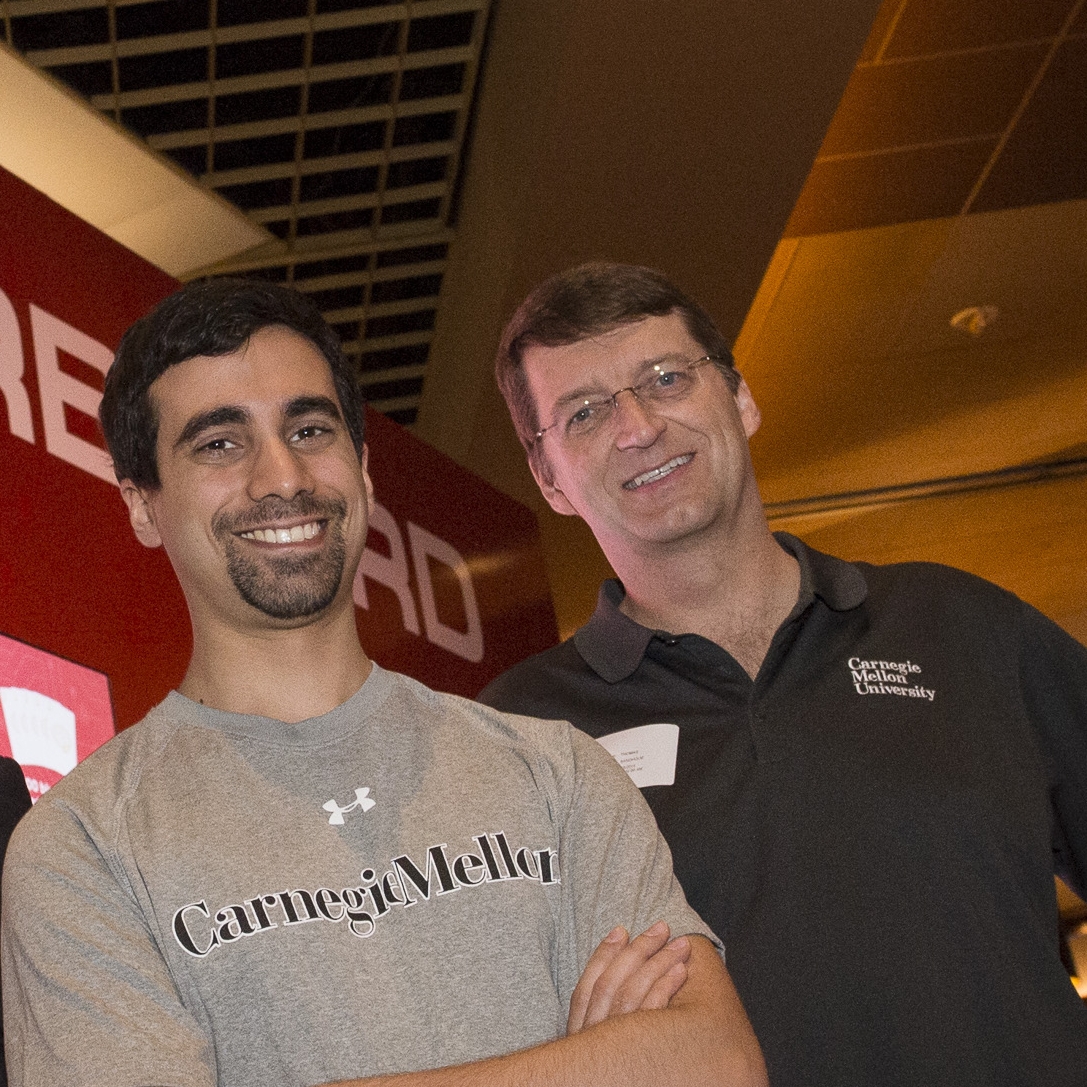Carnegie Mellon Pokerbot Extends Hot Streak at Computer Poker Contest Program Wins Total Bankroll Category in Heads-Up, No-Limit Texas Hold'Em
Byron SpiceWednesday, February 17, 2016Print this page.

A computer poker program called Baby Tartanian8 continued Carnegie Mellon's hot streak at the Annual Computer Poker Competition, taking first place in the total bankroll category and third place in the bankroll instant run-off category in the Heads-Up, No-Limit Texas Hold'em game.
Tuomas Sandholm, professor of computer science, and Noam Brown, a Ph.D. student in the Computer Science Department, created the pokerbot for the competition. The results were announced Feb. 13 at the Association for the Advancement of Artificial Intelligence meeting in Phoenix. Ten teams competed this year.
In the total bankroll category, the winner is determined by total winnings. In bankroll instant run-off, the pokerbot with the lowest total bankroll is eliminated in each round.
During the last computer poker competition, in July 2014, the CMU team's Tartanian7 won both categories in heads-up, no-limit Texas Hold'em, prompting the School of Computer Science to create a "Brains Vs. Artificial Intelligence" competition that pitted Sandholm's Claudico pokerbot against four of the top 10 human professional heads-up no-limit Texas Hold'em players. That two-week, 80,000-hand contest at Pittsburgh's Rivers Casino ended May 8 with three of the four pros having higher winnings than the pokerbot, but not quite enough to attain statistical significance.
Tartanian8 is a completely new bot whose strategy was created by algorithms from scratch. The algorithms were more advanced than those used to create Tartanian7 and Claudico.
The CMU team competed with a "baby" version of Tartanian8 that was scaled down significantly to fit within the competition's 200 gigabyte data storage limit. It also could not do sophisticated real-time deliberation because of the competition's processing limit. The original Tartanian8 strategy was computed late last fall by Brown and Sandholm on the Comet supercomputer at the San Diego Supercomputer Center.
Poker has become a major test of artificial intelligence, Sandholm explained, because it is an incomplete information game. Players don't know what cards their opponents hold and all players try to mislead their opponents by bluffing, slow play and other devices.
The same sort of algorithms used to play poker could also be used to create strategies for applications involving cybersecurity, business transactions and medicine—all applications that Sandholm's research group works on. For instance, an AI might help doctors develop sequential treatment plans for a patient, or design drugs that are less prone to resistance. Or, such an AI might help people negotiate their best deal when purchasing a house or a car.
Byron Spice | 412-268-9068 | bspice@cs.cmu.edu
